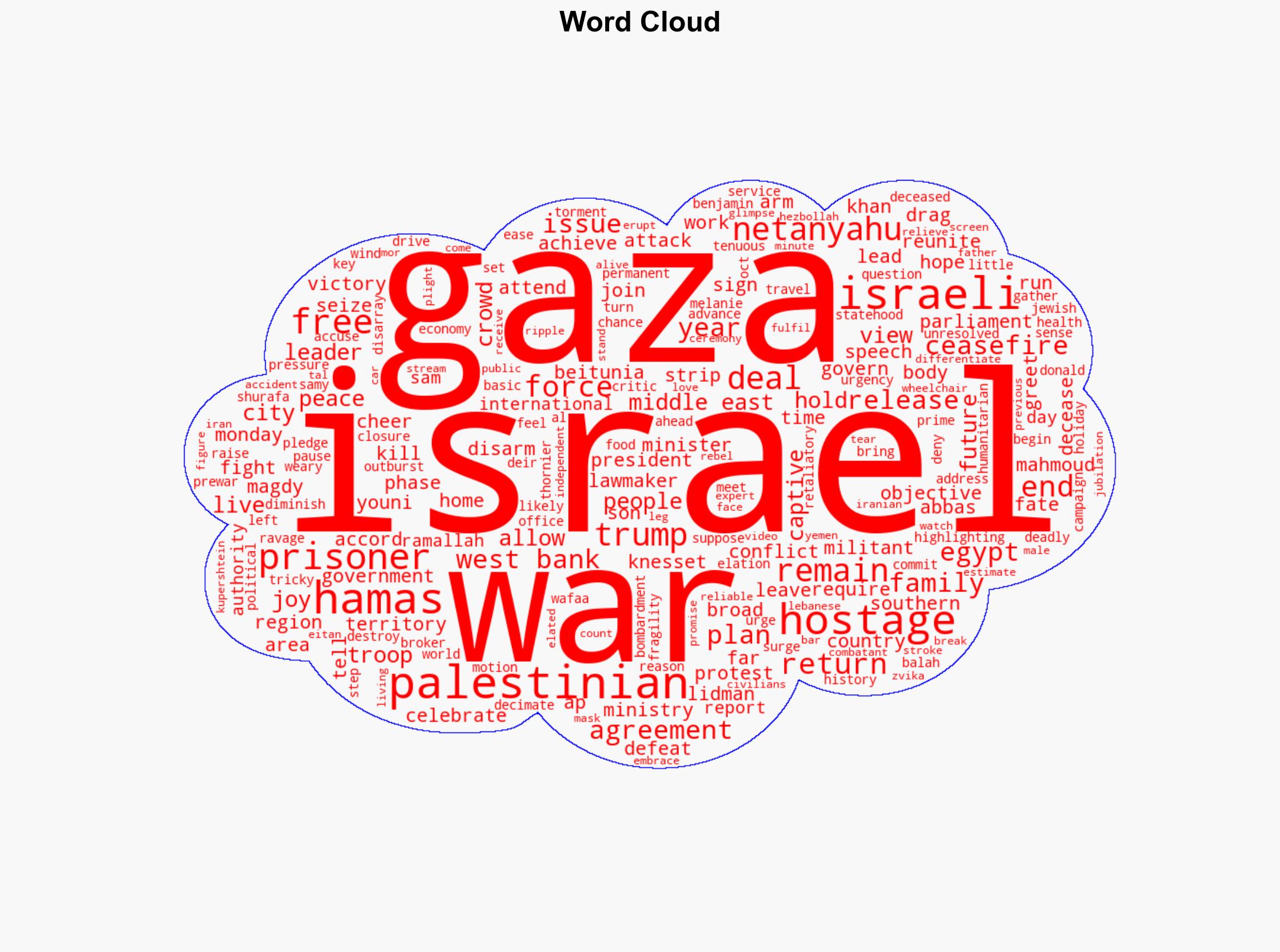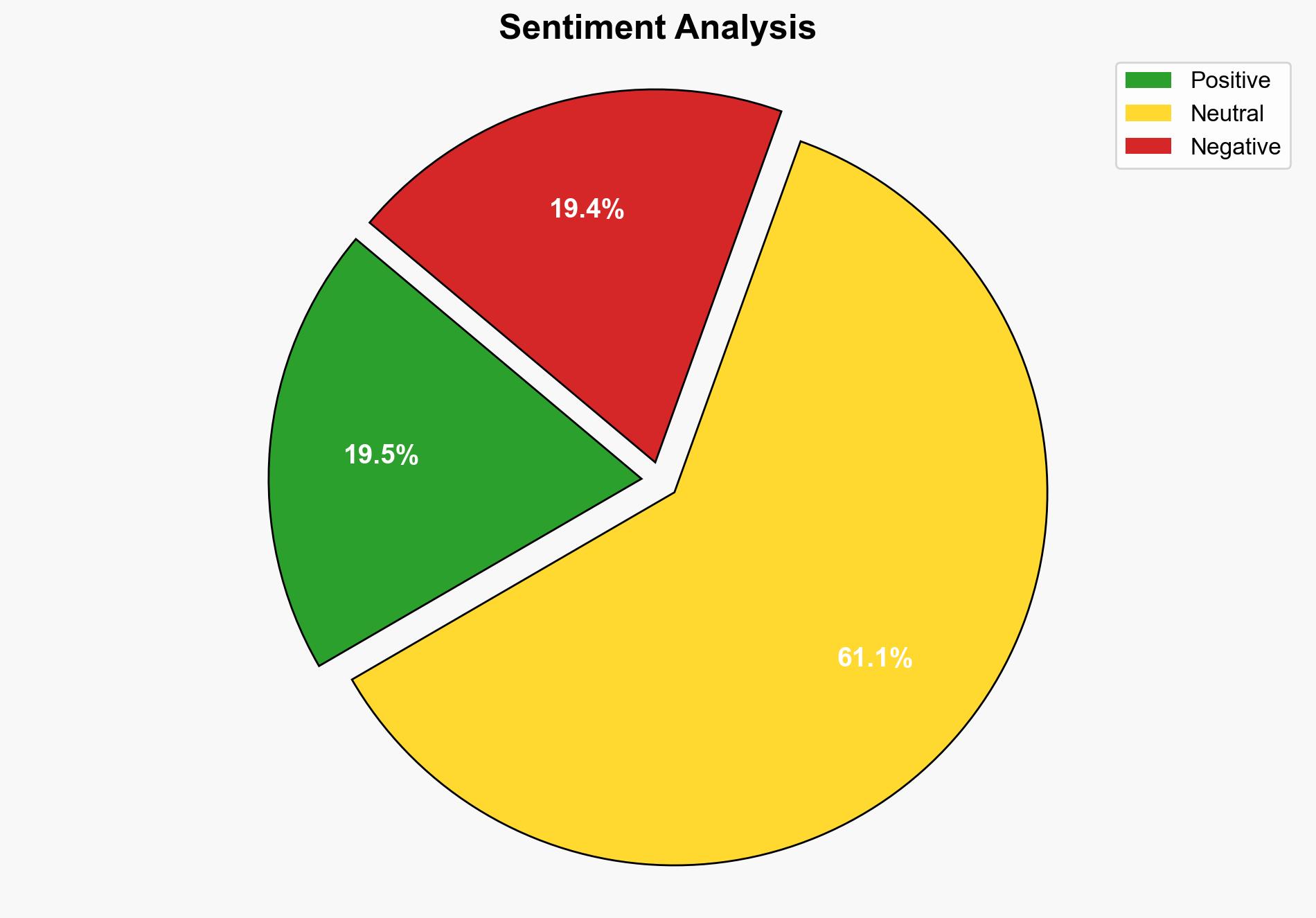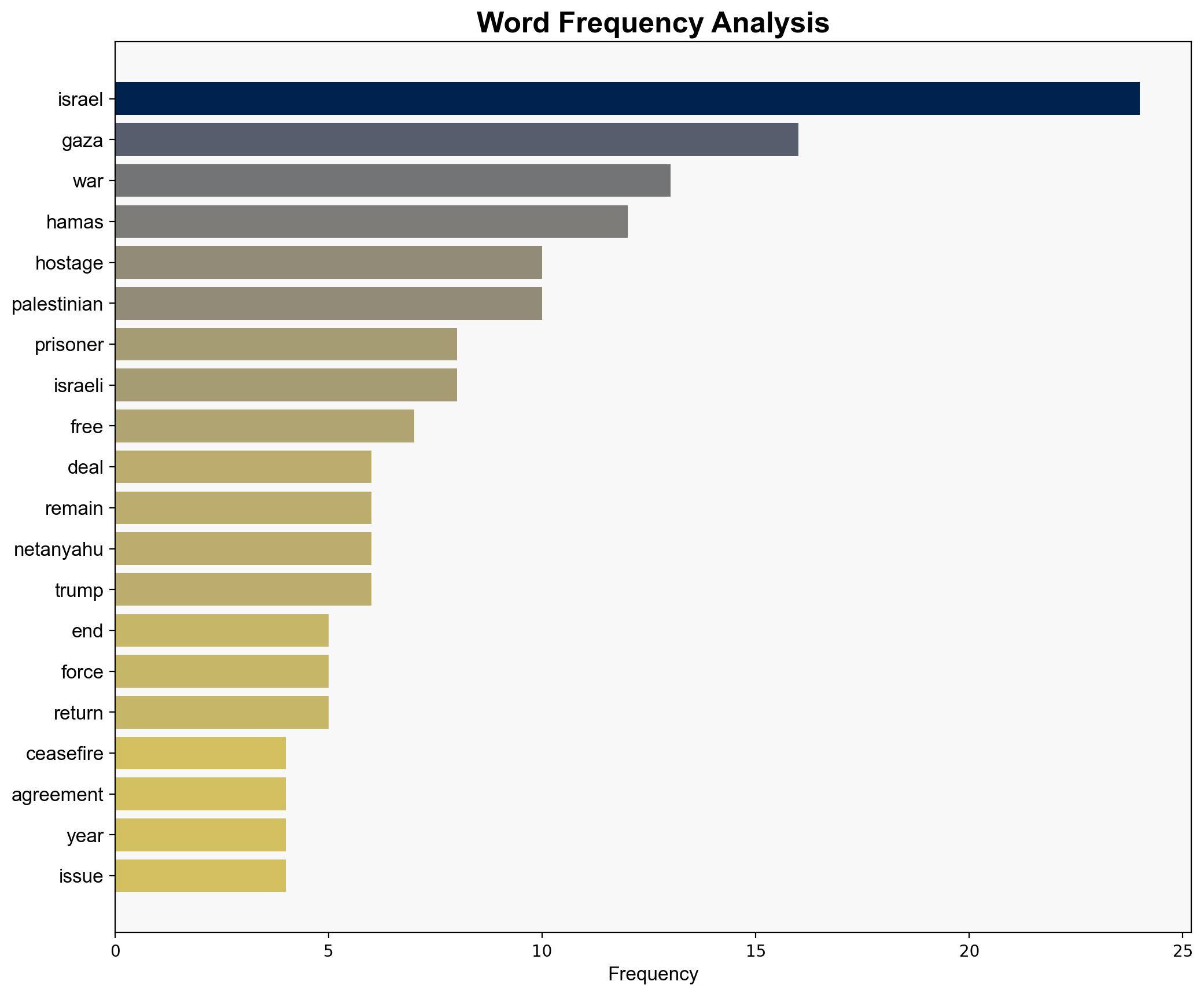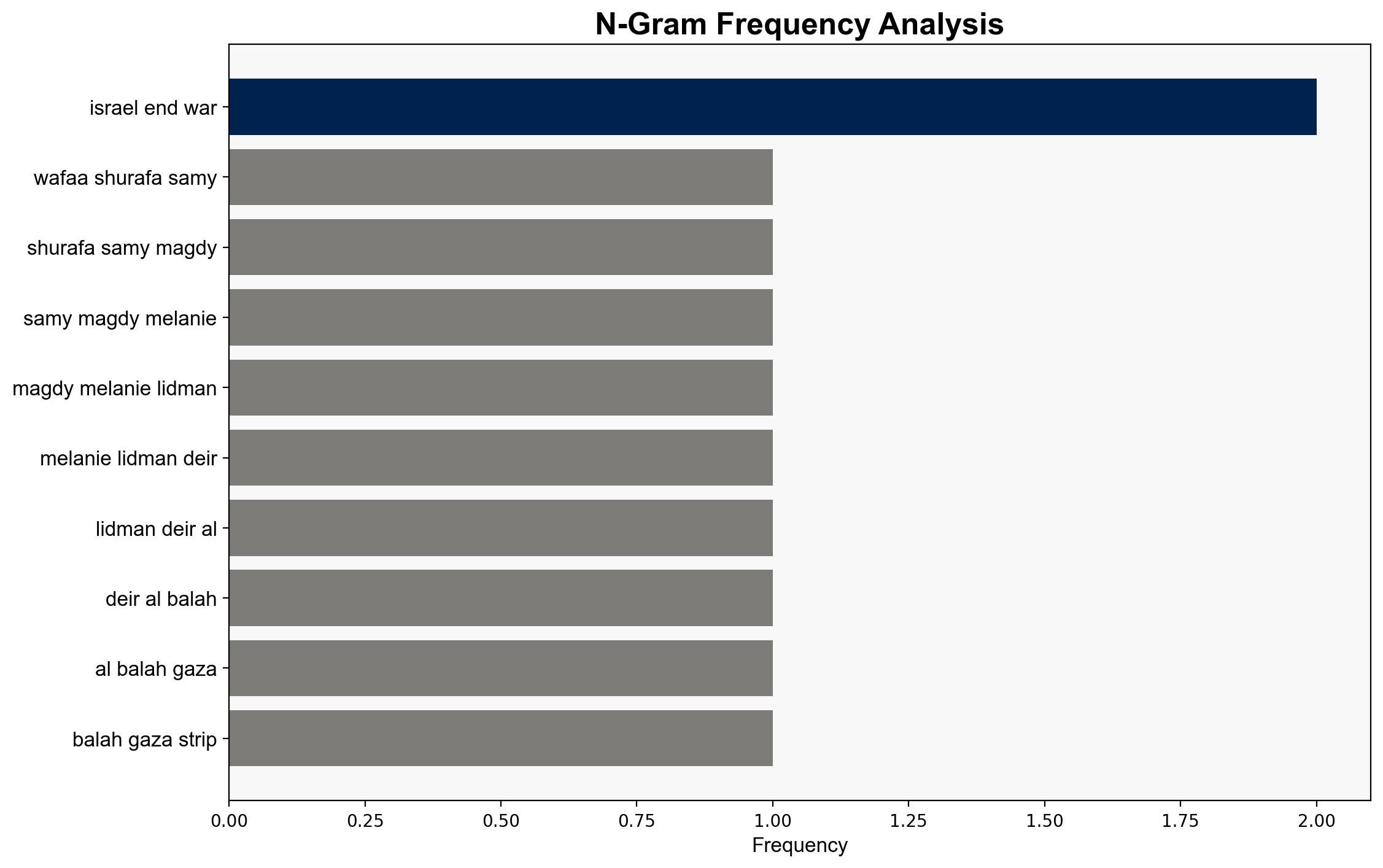First 7 hostages released as part of the Gaza ceasefire deal – Boston Herald
Published on: 2025-10-13
Intelligence Report: First 7 hostages released as part of the Gaza ceasefire deal – Boston Herald
1. BLUF (Bottom Line Up Front)
The release of hostages as part of the Gaza ceasefire deal marks a critical juncture in the Israeli-Palestinian conflict. The most supported hypothesis is that the ceasefire could lead to a temporary reduction in hostilities but is unlikely to result in a long-term resolution due to unresolved core issues such as Hamas disarmament and Palestinian statehood. Confidence level: Moderate. Recommended action: Engage in diplomatic efforts to address underlying issues and prepare for potential resurgence of conflict.
2. Competing Hypotheses
1. **Hypothesis A**: The ceasefire deal will lead to a sustained reduction in hostilities and pave the way for broader peace negotiations.
– **Supporting Evidence**: Hostage release, international diplomatic engagement, and public celebrations suggest initial success.
– **Contradictory Evidence**: Unresolved issues like Hamas disarmament and Palestinian statehood remain significant barriers.
2. **Hypothesis B**: The ceasefire is a temporary pause, with hostilities likely to resume due to unresolved core issues.
– **Supporting Evidence**: Historical patterns of conflict resumption, ongoing political tensions, and criticism of the deal’s limitations.
– **Contradictory Evidence**: Current diplomatic efforts and international pressure may extend the ceasefire.
3. Key Assumptions and Red Flags
– **Assumptions**: Both hypotheses assume that international diplomatic efforts will continue to play a role. Hypothesis A assumes that the release of hostages will build trust, while Hypothesis B assumes that deep-seated issues will override temporary gains.
– **Red Flags**: Lack of concrete plans for addressing Hamas disarmament and Palestinian statehood. Potential bias in relying on historical conflict patterns without considering new diplomatic dynamics.
– **Inconsistent Data**: Variability in reports on the success of previous ceasefires and the reliability of casualty figures from different sources.
4. Implications and Strategic Risks
– **Patterns**: Historical cycles of conflict and ceasefire in the region suggest a high risk of re-escalation.
– **Cascading Threats**: Potential for regional destabilization if ceasefire collapses, involving actors like Hezbollah and Iran.
– **Economic and Geopolitical Dimensions**: Continued instability could hinder economic recovery in Gaza and impact regional alliances.
– **Psychological Dimensions**: Public sentiment in Israel and Gaza could pressure leaders to either escalate or maintain peace efforts.
5. Recommendations and Outlook
- **Mitigate Risks**: Strengthen diplomatic channels to address core issues such as disarmament and statehood.
- **Exploit Opportunities**: Leverage international support to sustain the ceasefire and build momentum for broader negotiations.
- **Scenario Projections**:
– **Best Case**: Ceasefire holds, leading to comprehensive peace talks.
– **Worst Case**: Breakdown of ceasefire, resulting in renewed conflict.
– **Most Likely**: Temporary peace with periodic skirmishes and diplomatic challenges.
6. Key Individuals and Entities
– Benjamin Netanyahu
– Donald Trump
– Israeli Defense Minister Israel Katz
– Mahmoud Fayez
7. Thematic Tags
national security threats, regional focus, conflict resolution, diplomatic negotiations





